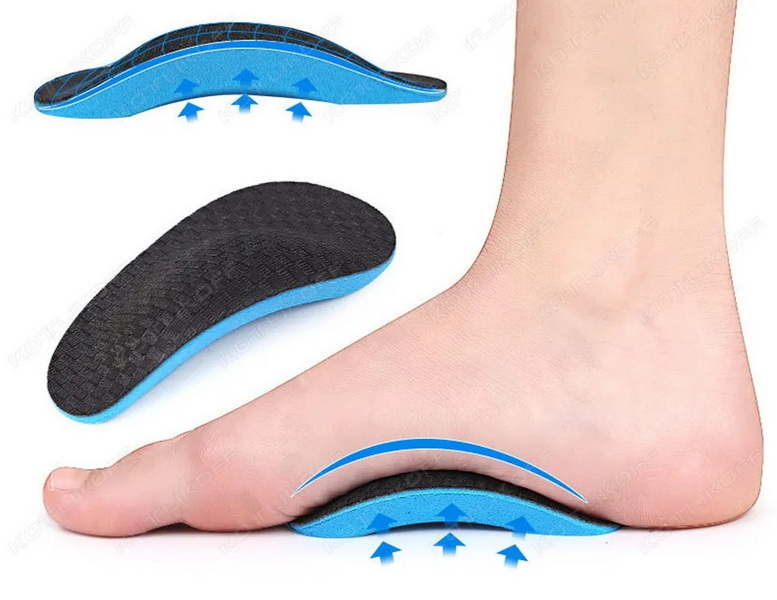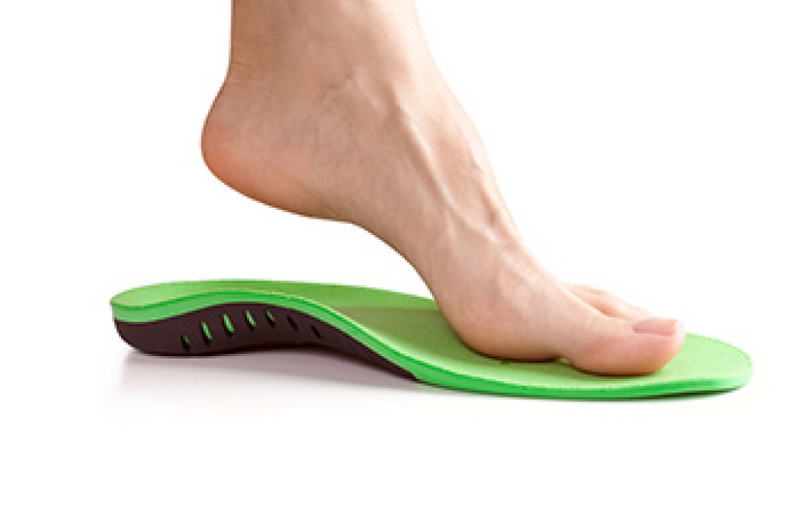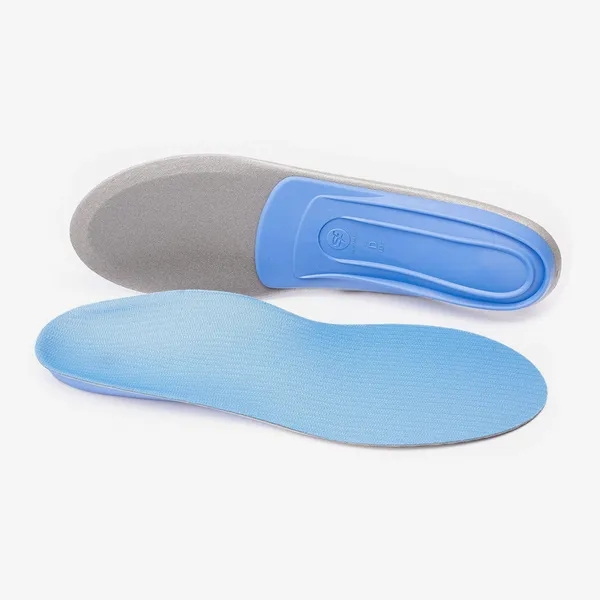










Content Menu
● Understanding the Role of Arch Inserts
● Why Correct Positioning Matters
● Classification of Arch Inserts and Their Positioning Characteristics
>> 3. Soft Cushion Arch Inserts
● How To Position Arch Insert: Step-by-Step Process
>> Step 1: Identify the Arch Type
>> Step 2: Prepare the Footwear Properly
>> Step 3: Locate the Arch Area
>> Step 4: Align and Fix the Insert
>> Step 5: Test Fit and Comfort
● Adjusting Arch Inserts for Different Shoe Categories
● Key Signs of Incorrectly Positioned Arch Inserts
● Techniques for OEM Customization Success
● Material Considerations in Positioning
● Comfort Testing Procedures for OEM Development
● Tips for Long-Term Maintenance of Arch Insert Positioning
● What Makes a Well-Positioned Arch Insert Good for OEM Clients?
● Improved Positioning Through Manufacturing Innovation
● Frequently Asked Questions (FAQs)
>> 1. How do I check if an arch insert is perfectly positioned?
>> 2. Can OEM factories customize arch insert positioning for brand clients?
>> 3. Are arch inserts suitable for high-heeled footwear?
>> 4. How can brands test comfort before large-scale orders?
>> 5. What is the most common mistake in OEM arch insert manufacturing?
Correctly positioning arch inserts is critical for ensuring comfort, alignment, and long-term foot health. For overseas footwear brands, wholesalers, and manufacturers working with OEM partners, mastering arch insert placement boosts customer satisfaction and product value. This detailed guide explores how to position arch inserts properly, covering techniques, variations, materials, and OEM integration considerations.

An arch insert is a supportive component placed within footwear to reinforce the natural curvature of the foot arch. Its purpose extends beyond comfort—it enhances stability, distributes body pressure evenly, and prevents various lower limb issues caused by poor alignment. Modern shoe designs increasingly incorporate specialized arch inserts as customers demand ergonomic and orthopedically sound footwear.
Key Functions of Arch Inserts:
- Support the natural arch and foot structure
- Alleviate stress on muscles, joints, and tendons
- Enhance walking comfort and performance
- Prevent overpronation or supination
- Provide stability during sports or prolonged use
From running shoes to formal footwear and orthopedic designs, every segment benefits from correctly positioned arch inserts.
The difference between a comfortable shoe and one causing discomfort often lies in millimeters of positioning. Even the best-quality arch support fails if incorrectly aligned inside the shoe.
Properly positioned inserts ensure:
- Correct heel alignment, stabilizing the entire foot
- Optimal pressure distribution across the arch and forefoot
- Smooth gait cycle transition from heel strike to toe-off
- Reduced risk of pain, especially in the plantar fascia and lower back
Incorrect placement, on the other hand, may lead to foot strain, arch collapse, or irritation at pressure points. Therefore, meticulous attention during OEM development and final assembly is critical.
These are generally crafted from durable materials like carbon fiber or thermoplastic. Ideal for corrective and orthopedic shoes, rigid inserts keep the arch elevated and minimize movement. When positioning, ensure a firm heel cup and precise arch alignment, as even slight misplacement can cause discomfort.
With layered materials combining firmness and flexibility, semi-rigid inserts suit everyday footwear and moderate activity levels. Their positioning must gently contour the arch while maintaining stability without restricting motion.
Foam, gel, or silicone-based inserts offer comfort and shock absorption rather than structural correction. Positioning should ensure seamless integration with the existing insole to avoid slippage or uneven height.
For OEM production, molds are often created from customer-supplied foot data or regional anthropometric standards. Precise placement in prototypes ensures the finished product maintains consistent ergonomics across batches.

Foot arches are typically:
- High arch: Requires a thicker, supportive insert with deep heel cushioning.
- Neutral arch: Balanced structure; moderate support works best.
- Flat arch: Needs moderate height with stable heel-to-toe transition support.
Identifying the type helps determine positioning points and insert curvature.
Remove any removable insole and clean the shoe cavity. Ensure no wrinkles or debris interfere with insert placement. Shoes with existing padding should be leveled for consistency.
The medial arch runs from the heel to the ball of the foot. Position the insert's highest area directly under this zone for support. Ensure the front edge aligns with the ball and that no part projects under the toes.
For OEM designs, manufacturers may pre-fix the insert with adhesive or molding integration. Retail-level users may place it manually. Always ensure that:
- The heel cup fits snugly
- The insert rests flat without folds
- The arch contour matches natural foot curvature
Let users test the fit by standing and walking. There should be even pressure with no pain at the heel or midfoot. Adjust as needed until comfort and alignment are optimal.
| Type of Footwear | Positioning Approach | Key Focus Area |
|---|---|---|
| Running Shoes | Slight forward placement to accommodate toe-off motion | Shock absorption & flexibility |
| Work Boots | Secure heel lock and deeper arch curve for stability | Long-duration comfort |
| Casual Shoes | Balanced insert height for light daily wear | Flexibility and breathability |
| High Heels | Slim inserts positioned toward midfoot | Balance and pressure relief |
| Sandals or Slides | Use low-profile integrated support | Prevent visible edges and discomfort |
- Discomfort or pain near the heel or arch area
- Foot sliding forward or backward inside the shoe
- Uneven shoe wear pattern developing
- Toes feeling cramped or excess upward pressure
If users experience any of the above, repositioning or custom adjustment is recommended.
China's footwear OEM manufacturers, like our company, integrate ergonomic precision from design to production stages. Positioning accuracy and comfort testing are performed during product development through multiple prototype cycles.
OEM Best Practices:
- Use 3D foot scanning during insert design.
- Conduct biomechanical field tests before mass production.
- Customize insert density according to the target market's activity patterns.
- Include positioning guides for brand or retail partners.
By offering OEM flexibility, overseas clients can create footwear lines with enhanced comfort and scientifically engineered support.
Different materials respond uniquely to foot pressure. While high-density EVA provides solid backing, memory foam adapts to pressure maps. During insert positioning:
- Ensure compatible adhesive bonding when integrating with midsoles.
- Avoid transition ridges between insole and insert base.
- Maintain overall shoe balance — even minor imbalances can alter gait dynamics.
Manufacturers typically test material interaction under repeated compression to assess long-term durability.
To ensure accurate arch insert placement, OEM developers often apply the following testing methods:
1. Pressure Mapping Analysis – Measures pressure points under the insole to validate equal distribution.
2. Walking Simulation Machines – Mimic gait cycles to check long-term insert behavior.
3. Human Fitting Trials – Include diverse testers to evaluate comfort across foot types.
4. Thermal Response Tests – Assess how insert materials retain or dissipate heat during movement.
Through these assessments, manufacturers refine positioning before large-scale production.
- Regularly remove and clean inserts to prevent deformation.
- Replace worn-out insoles every six to twelve months.
- Avoid prolonged exposure to heat, which may alter shape.
- Reassess fit after replacing shoes or during seasonal changes, as foot shape may naturally adjust.
For international footwear clients sourcing from China, superior insert placement translates to enhanced product marketability. Key benefits include:
- Reduced return rates: Satisfied customers experience fewer fit issues.
- Brand credibility: Consistent comfort reinforces trust and loyalty.
- Regulatory compliance: Proper positioning aligns with ergonomic safety standards.
- Greater design flexibility: OEM partners can adapt insert geometry for regional preferences.
A good insert aligns the entire kinetic chain, from foot to spine, promoting body balance and comfort.
Advanced OEM factories employ automated CNC shaping, robotic lamination, and smart contour alignment systems to ensure precision in each insert's angle. Continuous simulation through CAD modeling ensures minimal human error. Combining robotics and ergonomic science guarantees that each pair of shoes offers identical comfort standards.
Positioning an arch insert may appear simple but requires deep understanding of foot anatomy, materials, and shoe structure. Effective positioning enhances user comfort, supports proper body alignment, and reduces potential foot disorders. For OEM manufacturers, precision and consistency define quality. By integrating scientific principles, human testing, and modern manufacturing techniques, brands can confidently offer footwear that blends function, comfort, and durability—creating long-term satisfaction for global customers.

Stand naturally and note the sensations in your heel and midfoot. A correct position supports the arch without pressure on the toes or heel edge.
Yes, OEM suppliers can adjust insert angles, hardness, and curvature during mold design or production to match the target buyer's market needs.
Slim, contoured arch inserts can be integrated into high heels, improving balance and reducing forefoot strain without changing outer design.
Prototype sampling with various materials and insert heights allows multiple fit tests before approval for bulk production.
Failing to maintain consistent insert thickness during lamination, which leads to uneven balance and reduces perceived comfort quality.